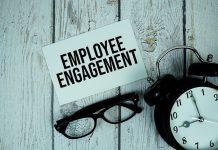
Every CHRO and talent leader knows that today’s competitive job market is making talent retention harder than ever. Recent Gallup research says 51 percent of current employees are seeking new opportunities. However, the same survey implies the damage is avoidable. A staggering 42 percent of employees who said they had voluntarily left their organizations in the past year reported that their manager or organization could have done something to prevent them from leaving their jobs. But, done what?
One of the most dynamic and quickly adopted answers to the turnover challenge is effective career development and transition training—especially if those programs are tailored to meet the diverse needs of different generations and learners today.
They Want It—and You and They Will Benefit
Career development is more than just a perk; it’s a critical component of a compelling employee experience. The 2022 LinkedIn Global Talent Trends Report found that employees feel professional development is the No. 1 way to improve company culture.
Our recent research found that leadership development and career transition programs are vital elements of holistic people-development strategies that create resilient employees and organizations. Employees who receive meaningful investment in their career development and career transition opportunities are significantly more optimistic about their future with their current employer:
- 87 percent of these employees expressed optimism about their current company.
- Sixty percent reported the highest levels of resilience, indicating that they are better equipped to handle challenges and changes in the workplace.
Deloitte data, meanwhile, shows that organizations with a strong learning culture, including investing in career development and transition, are 92 percent more likely to develop novel products and processes and are 17 percent more profitable than their peers. They also enjoy 30 to 50 percent higher rates of engagement and retention.
Our research project put an even finer point on the positive potential of personalized career development and transition benefits. We found that employees whose companies put energy, time, and funding into career development and career transition have significantly better employee experiences, a more positive perception of their organizations, and greater overall resilience. More specifically, we found these employees are more likely to:
- Perceive employer-employer relationships as more reciprocal
- Feel their employers as more empathetic
- View a layoff as a positive experience
- Recommend past employers and return as boomerang employees
- Feel employer-employee relationships can be genuine
- Perceive themselves as resilient
On the other side are the significant consequences of neglecting career development and transition training. For example, a report by the Execu|Search Group found that 86 percent of professionals said they would change jobs if a new company offered them more opportunities for professional development. And we don’t need to remind you of the cost of replacing an employee. You undoubtedly have heard the numbers often enough.
Addressing the Needs of Different Generations
Today’s workforce is characterized by a blend of generations, each with unique expectations and motivations. This diversity necessitates a tailored approach to career development and transition benefits. And it’s not just about the learning they receive. It’s also about when it’s offered and for whom.
- For example, despite having more experience with professional education than other generations, Millennials (born between 1981 and 1996) are far more focused on a give-and-take attitude toward professional development that continues even after leaving a company. This can benefit your employer brand and lead to quality boomerang employees, which makes talent acquisition less expensive and more efficient.
- Millennials are also more likely to endorse career development to promote succession or provide support during offboarding or a layoff. Together, these findings point to an increased interest by Millennials in career transition benefits, which, again, can help polish your employer brand and make rehiring more likely.
A Significant Shift in Preferences Among Generations
We found that Millennials and Baby Boomers (born from 1946 to 1964) prefer collaborative and one-on-one training—classroom-style training, for example. Gen Zers (born between 1997 and 2012 and the newest entrants in the workforce) are, however, “digital natives.” Gen Z has lived their entire lives with access to the Internet and anywhere-and-anytime digital media. It’s not surprising then that Gen Z strongly prefers on-demand and hands-on, individual learning.
Between the Millennials and Boomers, you also need to address Gen X (born between 1965 and 1980). These employees are more likely than other generational cohorts to value work-life balance and career stability—a critical consideration for career development and transition benefit planning. Career development for Gen X should focus on pathways for lateral moves and skill diversification, allowing them to gain new experiences without necessarily climbing the traditional career ladder.
5 Strategies for Implementing Effective Career Development
Five best practices can help your organization effectively integrate career development and training to retain top talent, ensure your employer brand stays untarnished, and speed up the rehiring of former employees.
- Conduct a needs assessment. Conduct surveys, focus groups, and individual interviews to gather insight into what employees value in their career growth.
- Tailor programs to individual needs. Develop personalized development plans that align with each employee’s goals and aspirations—leverage technology to provide customized learning experiences.
- Foster a culture of continuous learning. Encourage a culture where learning is valued and supported, including external certifications and accreditations.
- Provide career transition support. Through career coaching, job shadowing, and internal mobility programs, we can support lateral transitions and even changes in career paths.
- Measure and evaluate the impact. Regularly review and adjust programs based on participant feedback and organizational goal changes.
Summing Up
Today’s high rate of employee turnover is not an unavoidable reality. Organizations can create a work environment that fosters growth, resilience, and employee satisfaction by prioritizing career development and training. But, tailoring development programs to meet the unique needs of different generations is essential for success. As HR and Learning and Development professionals and employee development specialists, you have the opportunity to lead your organizations toward a future where career development is not just a benefit but a strategic imperative.




